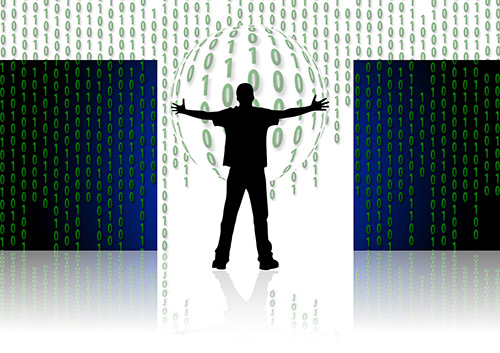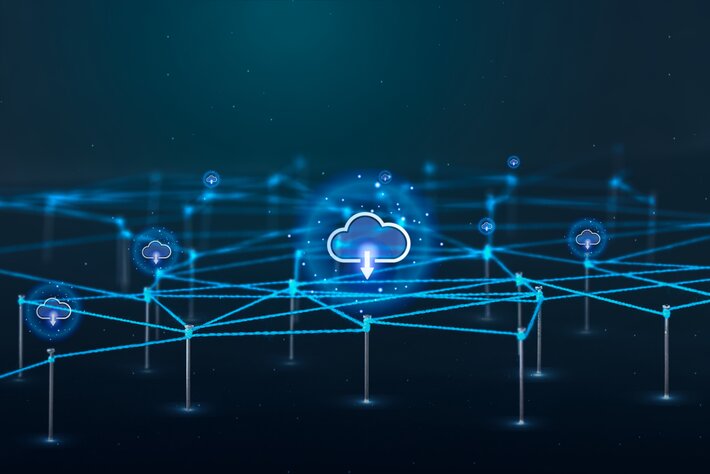It may be hard to believe, but the Internet of Things (IoT) is fairly simple in its bare bones. Essentially, the concept is that we are making products smarter and intercommunicative in order to make our lives easier.
The promise of IoT is being able to assemble data from lots of sources, but how do we make sense of all that information to our benefit? After all, data without good analytics is just data. Compelling visual dashboards that present real-time data for every strata of any organisation will be crucial to ensuring IoT isn’t just a fad, but a game-changer.
Simply matching raw sensor numbers by timestamps isn’t enough. Machine learning needs to involve data collection, analysis and presentation for businesses to get the most out of their investment. Gartner[1] previously estimated that IoT adoption will grow to 26 billion Internet-enabled devices installed by 2020, and as the build-up around the Internet of Things continues to grow, the role of analytics is primed to grow in tandem.
Beyond the hype
Gartner has placed IoT at the top of its “hype cycle” in its latest report on Emerging Technologies, which suggests that IoT is currently loaded with inflated industry expectations, much like big data was until recently. Is it worth the hype? I’d like to think that the opportunities that IoT can bring to Enterprise IT are endless. IoT can diversify data sources and enable analytics to be applied to a greater degree in areas as diverse as manufacturing and healthcare – in fact, practically every area of life.
Ultimately, early adopters will be in the industries that already control sensor data – such as manufacturing and supply chain companies – since their machines and fleets typically already have Internet-enabled sensors or devices. In manufacturing, monitoring sensors attached to devices can inform the business on the performance and efficiency of various machines in real-time.
But this can only be done with the right dashboards and markers that data analytics can provide. Almost every sector in every industry can be made to talk to each other, and all these communications can be tracked, measured and analysed through data analytics, which can boost overall performance and allow businesses to think beyond reporting and monitoring, to see how these insights can help shave costs or grow opportunities.
IoT presents a treasure trove of possibilities that can be used for public benefit too. For example, public utilities companies could explore the smart grid, where all points of the power grid are linked to the Internet. This allows constant monitoring to prevent breakdowns and outages, and opportunities for governments to diversify their energy mix, including renewables with conventional energy sources for the smooth management of smart, sustainable cities.
New Zealand utility company, MainPower is an example of this. The company analyses a wide scope of data from different sources, most of which are channelled from a geographic information system to map all assets with coordinates. Joining data from different sources, MainPower can identify where data collection is lacking or of poor quality. Data is now displayed on a geographical map, allowing MainPower to identify problem areas and reorganise its workflow to prioritise jobs that need to be attended first. The company suddenly had a way of unlocking existing data, now seeing how different jobs in one particular geographical area could be grouped together for maximum efficiency — all of which saves the company time and money.
Presentation, presentation, presentation
Machine learning is in its infancy, but there are vendors out there carving a space in the IoT industry which go beyond data collation. For example, Santa Clara-based machine data analytics vendor Glassbeam facilitates real-time analytics and machine learning, concentrating on complex, multi-structured log data from medical devices, sensors and automobiles in addition to data centre devices. Basically, Glassbeam’s SCALAR platform leverages open source Big Data technology to deliver actionable business intelligence from structured and unstructured data, simultaneously processing massive amounts of machine data to make connections between source data elements.
It’s clear that machine-to-machine technology needs to be paired with analytics to get the most out of business operations, but without data visualisation as a part of its analytics, businesses run the risk of alienating their non-technical departments that could benefit from understanding the way the business works, such as the marketing or procurement teams. Similarly, the C-suite may only require top-line information, which come from their analysts who carry their own biases. A dashboard with relevant data can provide a clear picture of where the business is in its growth trajectory, where it plans to be, and which areas need more focus to get the business to where it aims be.
Glassbeam’s output consists of visually rich, business intelligence dashboards that does just that, powered by Tableau. These dynamic, real-time dashboards illustrates trends and key attributes of source data, and given that IoT remains to be fully realised, the technologies that champion data collection, analysis, and presentation in one suite have the opportunity to galvanise a sea of change in IoT across industries.
Enhancing the customer experience
The greatest aim businesses strive for is customer satisfaction, whether they’re targeting other businesses or the general public. In the past, cheerful face-to-face interaction, bespoke on-premise services, and customised products were enough. Now, more business dealings are taking place online, and in the next three to five years, we could see 88% of all interactions with customers take place digitally. This calls for e-commerce to provide personalised services to their millions of customers across time zones around the world – tough proposition.
In the retail space, websites collect data such as purchase history and customer profiles to make recommendations just as an automated personal shopper would. Personalisation through machine learning is made possible through analytics, sifting through millions of rows of browser data and profile data.
As technology continues to improve, machine learning’s uses and applications will be better understood, and online business experiences will only become more personal and fulfilling.
Future potential
From aviation to agriculture, every industry can benefit from tying business analytic capabilities to the vast volumes of data generated by machines and sensors. So what’s next? This data can fuel what could be called the next industrial revolution, where manufacturing and services aren’t just automated, but are driven by data in a way that fundamentally improves how factories work, businesses run, and people live.
Right now, machine learning and analytics just pinpoint problems. It’s only a matter of time before machine learning paired with data visualisation will facilitate predictive problem solving.
By implementing a digital workforce of intelligent machines, businesses can benefit from greater levels of productivity and eliminate human error – ultimately cutting costs and increasing revenue.
Businesses should therefore consider the value of investing in large-scale IoT and embrace the change in order to remain competitive in our post-recessionary economy.
[1] http://www.gartner.com/smarterwithgartner/the-internet-of-things-is-a-revolution-waiting-to-happen/ (April 2015)
The author of this blog is James Eiloart, VP, Tableau UK.
http://www.tableau.com












